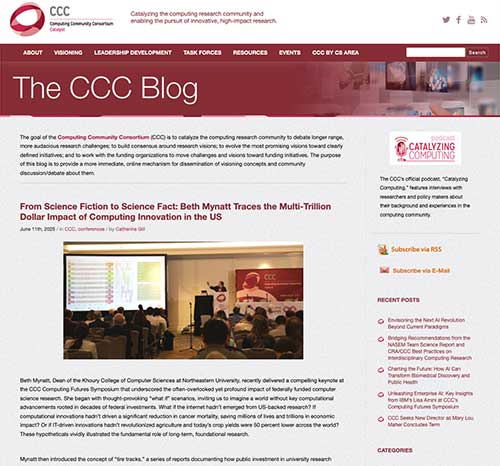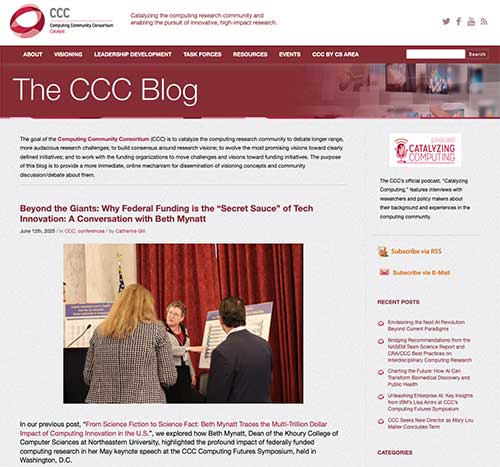The partnership that fuels America
The economic necessity of federally funded university research

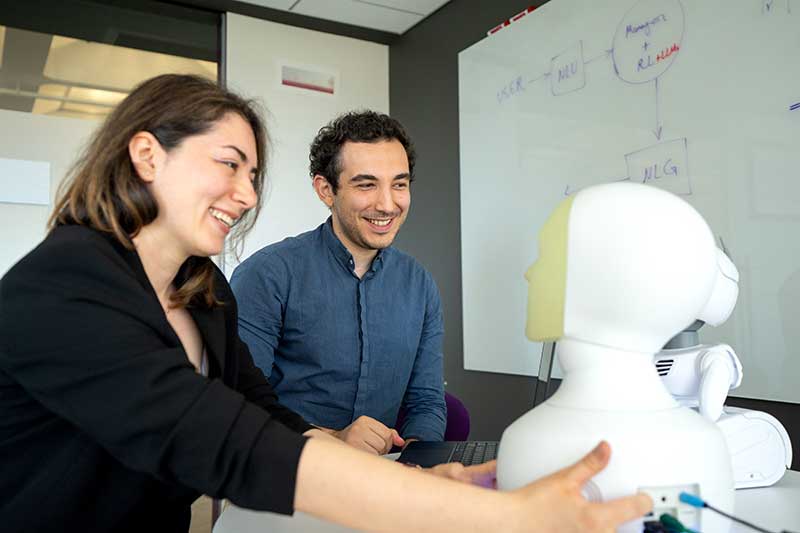
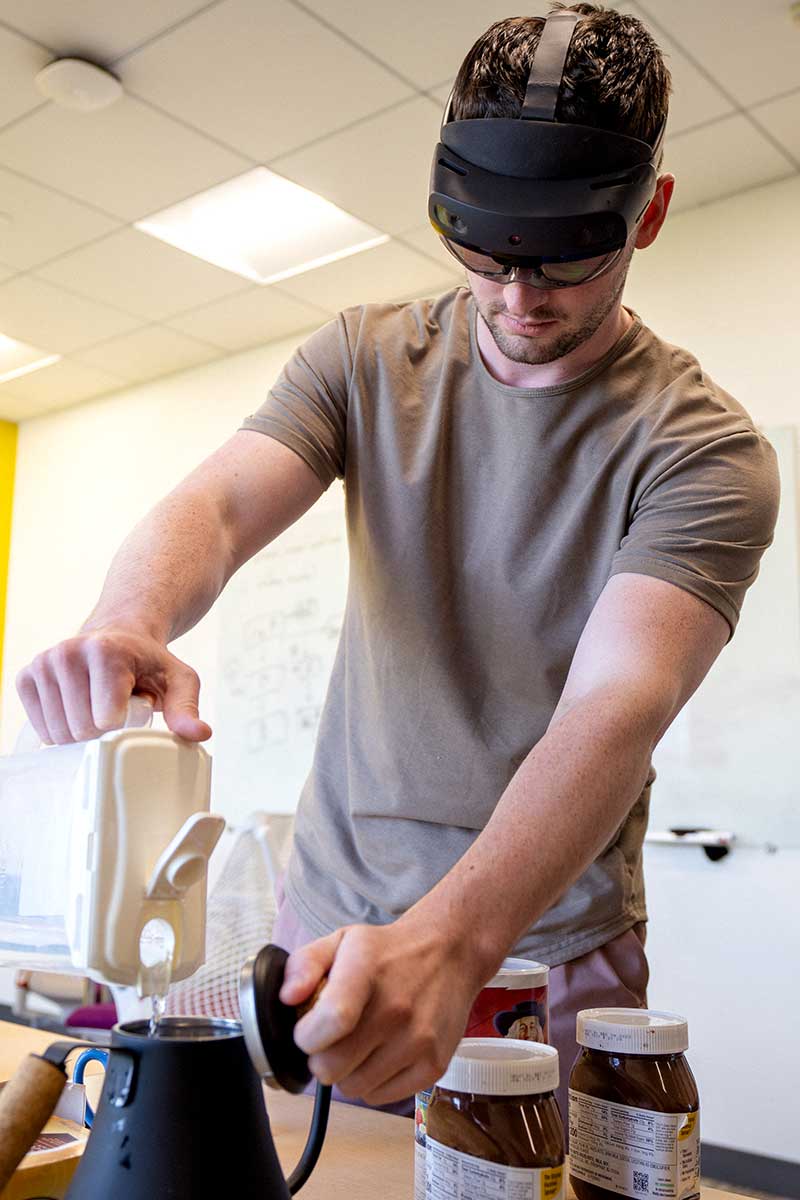

The importance of federal funding for computing research at universities can’t be overstated — it’s what’s behind the smartphone in your pocket, the virtual, yellow first-down line you see during an NFL football game, and even the milk you drink. The partnership between government investment, academic research, and industry innovation has driven decades of technological progress and economic growth for the US. And the benefits often extend far beyond the initial investment; today’s abstract research questions can become tomorrow’s breakthrough technologies, generating new companies, jobs, and entire industries along the way. In collaboration with the National Academies and the Computing Research Association (CRA), Khoury College is committed to playing a key role in this partnership.
The “tire tracks” visualization, which in 1995 began mapping how academic breakthroughs led to billion-dollar IT innovations, has evolved to capture an increasingly complex reality: computing research no longer just creates IT companies — it transforms entire industries across the economy. These reports — the most recent of which was chaired by Khoury Dean Beth Mynatt — underscore the core message that continued federal investment in fundamental computer science research isn’t just beneficial; it’s critical.

Dean Mynatt: The “exponential payoffs” of federal funding
In this Q&A with Khoury News, Mynatt explains the unique role of university research in innovations that provide “exponential payoffs,” many that flourish years after the initial government investment: “Because universities aren’t beholden to [industry] pressures and because they can play the long game, they are better suited to fundamental research…universities can also innovate in ways that companies aren’t incentivized to.”
The magic of basic research
Take a look at some of the many ways the critical confluence of federal funding, university IT research, and industry production has impacted the way we live for the better.
Cryptography: The invisible security force
Today’s everyday purchases, next-day deliveries, and online health records are safe and secure thanks to a monumental innovation in security — public-key cryptography — made almost 50 years ago by Stanford scientists with the help of federal funding. Khoury researchers are working to push the boundaries even further, exploring whether we can browse the internet, chat with AI, and navigate online without revealing private information to anyone — even search engines.
Supporting aging at home with AI
The best AI doesn’t just recognize patterns. It recognizes people — their needs and their priorities, and for many older people, their desire to age at home. Federal, academic, and industry partnerships helped create social robots that remind people to take medication, smart systems that spot fall risks, and tools that protect loved ones from fraud. And we’re only just beginning.
Cows and RFID
Even a glass of milk benefits from federally funded research — in fact, it contains decades of information technology. Cornell scientists in the 1970s adapted WWII RFID technology to identify and track cows. Years later, this same technology was integrated into robotic milkers that reduced farmers’ workload while improving cows’ quality of life.
Dean Mynatt on Mindscape podcast
Listen in on a conversation between Mynatt and Sean Carroll, noted physicist and host of the Mindscape podcast, in which they discuss big-picture questions about the importance and trickle-down of university research, Mynatt’s own research in human-centered computing, and more.

Computing Research Association (CRA) Collaboration
Khoury College’s connection with the CRA has been a key factor in advancing the conversation. As part of a May 2025 keynote at the CRA’s Computing Community Consortium (CCC) Computing Futures Symposium in Washington, DC, and in a follow-up interview, Mynatt emphasized the deep impact of federal investment in CS research across countless industries.
Academia spearheads a lot of advancements in ‘public good technologies’ that may not generate significant profit but have immense societal value. Take assistive technologies, such as motorized wheelchairs and screen readers for example. While these niche markets may never drive profits for private companies, the existence and continuous improvement of these technologies, fueled by federal grants, enable individuals with disabilities to work, contribute to the economy, and reduce reliance on public assistance
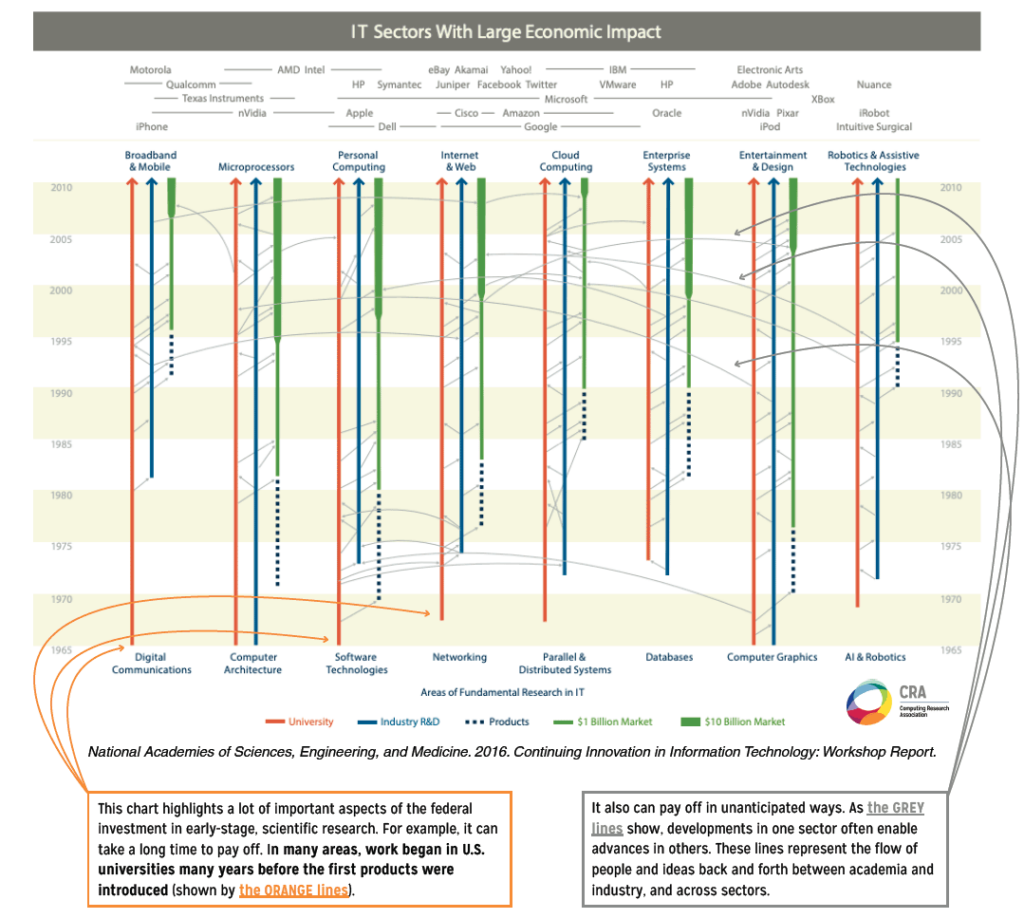
2020 National Academies report: Resurgence, Confluence, and Continuing Impact
Building on a series of National Academies of Sciences, Engineering, and Medicine reports started in the mid-1990s, linking government investments in academic computing research to the ultimate creation of information technologies and economic value in the US, the latest report describes the continued pattern of research investment and IT innovation but as no longer limited to just IT companies. Instead, researchers aimed to reflect the transformative impact of IT across many industry sectors.
